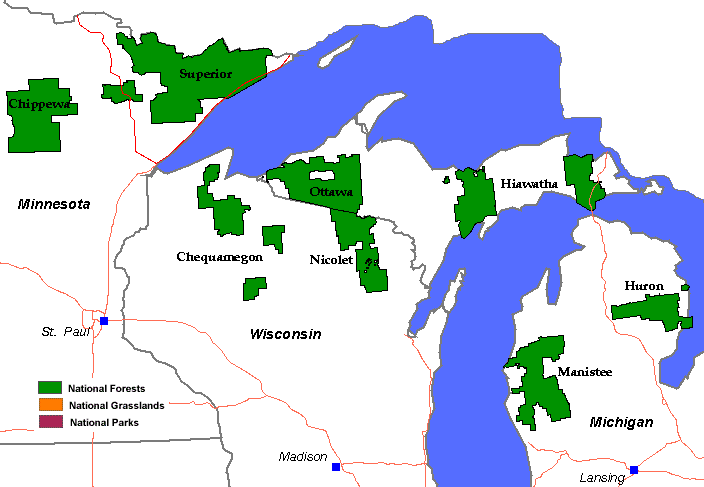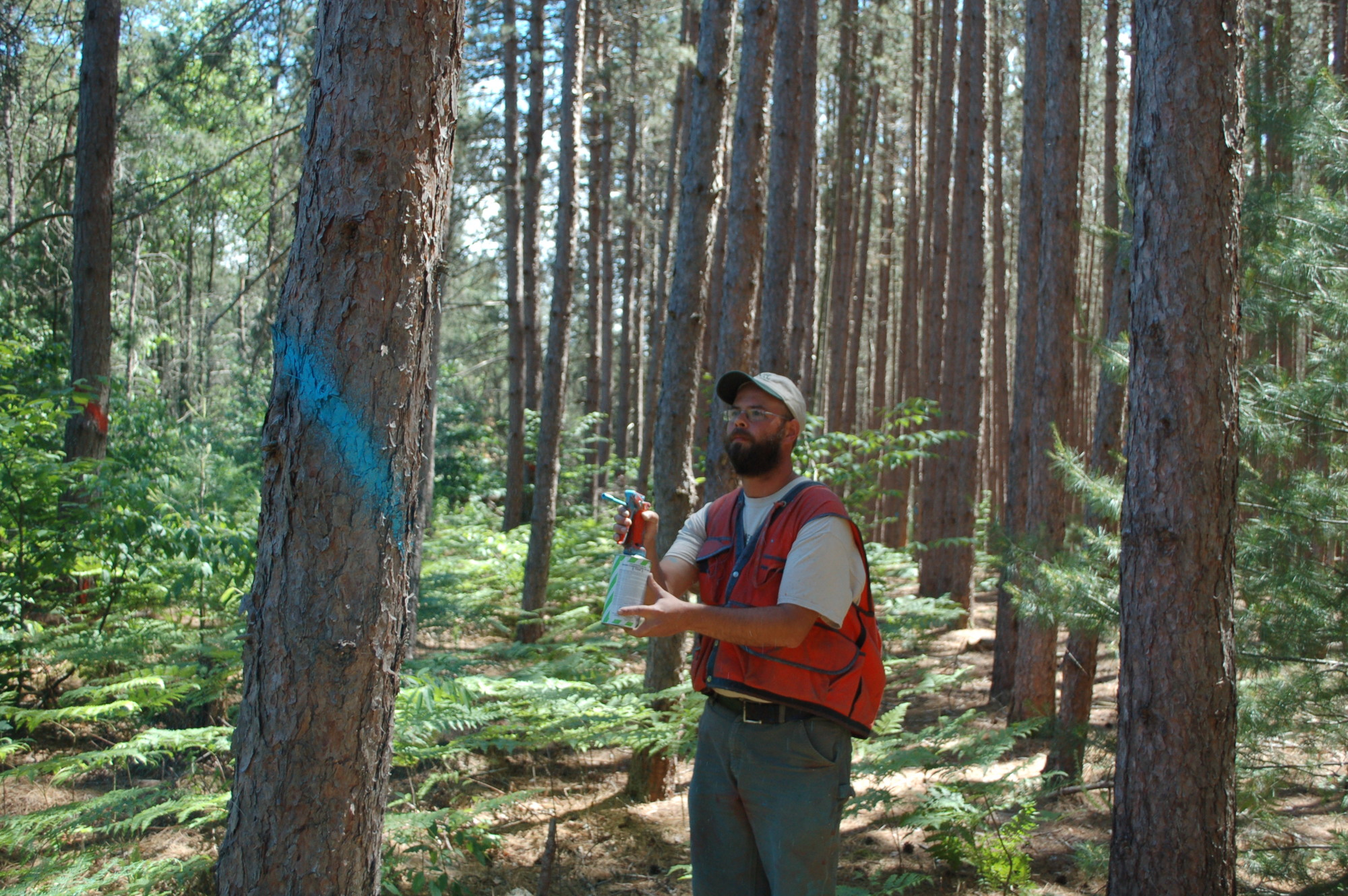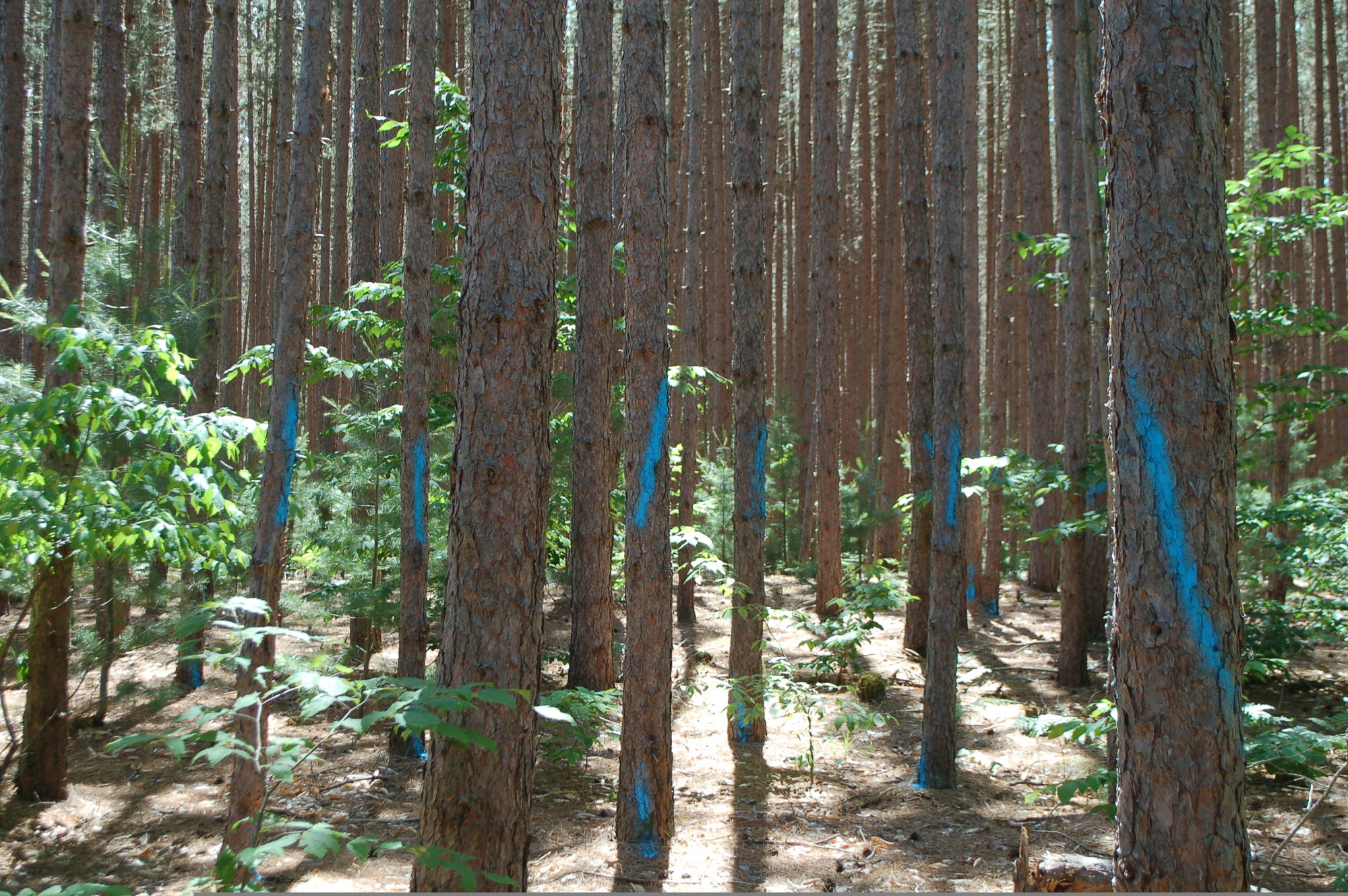DNR and U.S. Forest Service cooperate on ‘Good Neighbor Authority’
The Michigan Department of Natural Resources has long managed state forests to provide both timber and wildlife habitat. Now, the DNR is working to do the same thing on federally managed lands in Michigan’s three national forests.
To do this, the DNR has signed on to a program authorized in the 2014 federal farm bill.
The “Good Neighbor Authority” allows state natural resource agencies to assist the U.S. Forest Service and the federal Bureau of Land Management on timber and watershed restoration projects across the country.
Michigan was the second state in the country to sign an agreement and the DNR is working on projects in all three national forests in Michigan – the Huron-Manistee in the Lower Peninsula and the Ottawa and Hiawatha national forests in the Upper Peninsula.
“Our foresters are setting up timber sales on national forest lands, setting them by Forest Service prescriptions, but using our timber sale process,” said Derek Cross, a DNR forest inventory and planning specialist for the western Lower Peninsula. “We may start writing some (forest) prescriptions too – (but) that’s something to be worked out in the future.”
The Good Neighbor Authority’s cooperative agreements allow federal land managers to access more resource professionals without expanding federal budgets. The DNR will be paid for its work on federal land through the proceeds from timber sales.
“It seems like it could be a good relationship for both of us, helping them get things done that they haven’t been able to do in the past,” Cross said. “We’re able to (get) work (done) in some of the smaller, harder-to-get-to (forest stands) with our contacts.”
The Good Neighbor Authority allows foresters to more easily work across borders and take a landscape-scale approach to management.
Foresters mark timber for harvest and set up sales through the typical DNR process.
In the Lower Peninsula, the DNR currently is working on a project in Wexford County, near Cadillac, on a 118-acre red pine plantation that is approximately 70 years old. DNR foresters are marking trees for removal to improve growth of the remaining forest.
Other upcoming projects in Lake and Newaygo counties involve additional pine thinning.
 On the east side of the Lower Peninsula, the DNR has entered into agreements with federal officials for projects involving oak, aspen and mixed pine-hardwoods tracts. On the east side of the Lower Peninsula, the DNR has entered into agreements with federal officials for projects involving oak, aspen and mixed pine-hardwoods tracts.
Susan Thiel, the Grayling unit manager for the DNR, said the work on the east side of the state is just getting under way. After waiting for signed agreements and paint delivery, crews are now set to begin their work.
Thiel said DNR foresters out of the Mio field office will be working on about 400 acres in multiple stands.
“They (the projects) range from clear cuts to thinning,” Thiel said. “We’re managing for aspen and we’re managing for oak. Some of the oak (harvest) is for regeneration, and thinnings are to promote growth of the existing trees – it’s the exact same management as we’re doing on the forests here except were following the feds’ prescriptions. The sale will be administered through our process.”
Thiel said the federal paint color protocol is different than the colors the DNR uses.
“That’s the biggest difference,” she said.
Cross said the DNR would like to have more than 600 acres of timber cuts in the Huron-Manistee National Forest prepared for bidding by Oct. 1.
Bob Tylka, a DNR timber management specialist for state-managed forestlands in the western Upper Peninsula, said there are two Good Neighbor Authority projects currently under way on the Ottawa National Forest in the western U.P., totaling 285 acres.
A crew is working on a 191-acre project in the DNR Forest Resources Division’s Baraga Unit, marking a 76-year-old red pine and white pine stand for a selection cut.
“I took their information and wrote the prescription using their form and it was approved by the feds before we translated it back into our system,” Tylka said. “It’s mostly a red pine thinning, but we’re opening it up enough to turn it into a mixed-pine stand.” translated it back into our system,” Tylka said. “It’s mostly a red pine thinning, but we’re opening it up enough to turn it into a mixed-pine stand.”
The other U.P. project is about 94 acres near Iron River and is being administered from the DNR’s Crystal Falls office.
“We anticipate the program growing,” Tylka said.
Timber sale work is also under way in the Hiawatha National Forest in the eastern U.P, with about 480 acres of timber sales being prepared by DNR foresters from the Sault Ste. Marie and Shingleton offices.
Mike Stimak, the timber program manager and contracting officer for the Huron-Manistee National Forest, said the folks he’s been working with at the DNR have been “great.”
“Overall I have been exceedingly pleased with the willingness and cooperation of the DNR,” Stimak said. “They have been fantastic. I see Good Neighbor Authority as an opportunity to get more of the forest plan implemented. It takes time and planning to get all this together – it can be almost a three-year process from the time we start the National Environmental Policy Act (NEPA) review process until timber sales are sold. I can see Good Neighbor Authority as being positive in moving this along.”
Stimak said he can envision an expanded role for the DNR in terms of helping to get NEPA environmental review surveys completed, implementing restoration projects and in the planning of future projects.
“To me it’s a wide-open field for opportunities that will be opened through this new authority,” Stimak said.
David Price, who oversees forest planning and operations for the DNR Forest Resources Division, said the Good Neighbor Authority is “absolutely a positive development.”
“This will help all three national forests in Michigan accomplish their goals,” Price said. “And the timber sale revenue the Forest Service realizes will remain in the state, so they can use those dollars to conduct additional work on those forests.”
Learn more about the “Good Neighbor Authority.” Find out more on Michigan’s state forests.
Catch upcoming stories by subscribing to free, weekly “Showcasing the DNR” articles. Check out previous Showcasing articles.
/Note to editors: Contact: David Price, 517-284-5891 or John Pepin, 906-226-1352. Accompanying photos are available below for download and media use. Suggested captions follow. Credit: Michigan Department of Natural Resources.
Marking: Michigan Department of Natural Resources forester Andrew Hallfrisch, of the Cadillac DNR office, marks trees for an upcoming timber cut on national forest lands.
Pines: A stand of red pine trees marked for cutting.
The Michigan Department of Natural Resources is committed to the conservation, protection, management, use and enjoyment of the state’s natural and cultural resources for current and future generations. For more information, go to www.michigan.gov/dnr.
|


 On the east side of the Lower Peninsula, the DNR has entered into agreements with federal officials for projects involving oak, aspen and mixed pine-hardwoods tracts.
On the east side of the Lower Peninsula, the DNR has entered into agreements with federal officials for projects involving oak, aspen and mixed pine-hardwoods tracts. translated it back into our system,” Tylka said. “It’s mostly a red pine thinning, but we’re opening it up enough to turn it into a mixed-pine stand.”
translated it back into our system,” Tylka said. “It’s mostly a red pine thinning, but we’re opening it up enough to turn it into a mixed-pine stand.”




